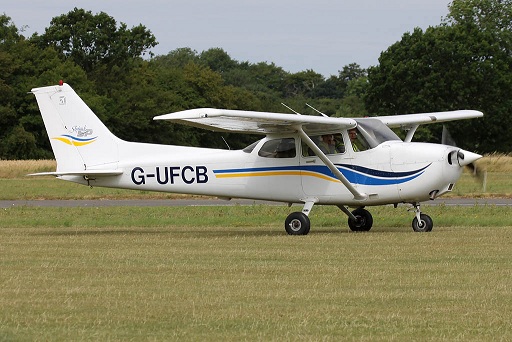Lesson 2: Pre-flight aircraft checks, aircraft start-up checklists, taxing turns and shutdown.
85 – The number of checks, before the plane is started.
39 – The number of checks, after the plane has been started, but before you can take-off.
This was a ground only lesson, going through the following areas:
- Where the club keeps the books
- Aircraft keys and documents
- External check list for the aeroplane
- Internal (Pre-start, Pre-Taxi and Pre-Take-Off) checklists
- Taxing
- Turns & Tight Turns
- Shutting down the aeroplane
It’s Exercise 5 of the PPL Course book.
As you can see from the shear numbers, there’s a lot to check.
G-UFCB as we found during the checks, was in a bit of a beaten up way. Good news from my perspective: Instead of talking about “if it has a bald patch on the tyre…”, this plane actually had one. Instead of trying to imagine what a plane looks like when you can’t see any of its front gear Oleo this plane had no metal visible (even when the instructor pushed on the stabliser at the back to try and lift the nose). So from a lesson perspective, a good plane – at the end of the day the plane was already scheduled in for maintenance.
My first ever taxi was never going to fantastic, but for whatever reason no matter how hard I pushed on the left rudder pedal, the plane wanted to keep going right (I guess it knew its way to the runway!) – the instructor had a go and commented on it. However, you can turn a plane like you can turn a tank – break one side and the difference in power will cause it to turn.
We did some turns, some tight turns (using the brakes), probably got in the way of a couple of people wondering “why are they spinning a Cessna round and around…” Then taxied back to the parking area, the taxi back was a bit better.
After Landing & Shutdown procedures (Just 17 checks), the lesson was done.
Before starting this course I’d done a lot of simulator stuff, read a lot etc. What I realised today is that what you just can’t learn without doing it, short of having a like-for-like hardware simulator, is how it all feels: How much friction is there on the throttle, what it actually feels like to set the heading indicator etc. What does it feel like when the rev’s drop 100RPM.
Finally, the Cessna photo is not mine, so credit to John Allan
